2,3,5-Tri-O-benzyl-D-arabinofuranose 1-(4-nitrobenzoate)
Modify Date: 2025-08-25 12:43:24
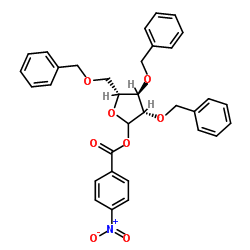
2,3,5-Tri-O-benzyl-D-arabinofuranose 1-(4-nitrobenzoate) structure
|
Common Name | 2,3,5-Tri-O-benzyl-D-arabinofuranose 1-(4-nitrobenzoate) | ||
|---|---|---|---|---|
| CAS Number | 52522-49-3 | Molecular Weight | 569.601 | |
| Density | 1.3±0.1 g/cm3 | Boiling Point | 706.2±60.0 °C at 760 mmHg | |
| Molecular Formula | C33H31NO8 | Melting Point | 69-72ºC | |
| MSDS | N/A | Flash Point | 246.8±34.9 °C | |
| Name | 2,3,5-tri-O-benzyl-1,0-(4-nitrobenzoyl)-D-arabinofuranose |
|---|---|
| Synonym | More Synonyms |
| Density | 1.3±0.1 g/cm3 |
|---|---|
| Boiling Point | 706.2±60.0 °C at 760 mmHg |
| Melting Point | 69-72ºC |
| Molecular Formula | C33H31NO8 |
| Molecular Weight | 569.601 |
| Flash Point | 246.8±34.9 °C |
| Exact Mass | 569.204956 |
| PSA | 109.04000 |
| LogP | 8.36 |
| Vapour Pressure | 0.0±2.2 mmHg at 25°C |
| Index of Refraction | 1.631 |
| InChIKey | VBDBDZHLJKDSSB-UFRUDBOASA-N |
| SMILES | O=C(OC1OC(COCc2ccccc2)C(OCc2ccccc2)C1OCc1ccccc1)c1ccc([N+](=O)[O-])cc1 |
| Storage condition | −20°C |
Synonym:None Section 2 - COMPOSITION, INFORMATION ON INGREDIENTS
Risk Phrases: None Listed. Section 3 - HAZARDS IDENTIFICATION EMERGENCY OVERVIEW
The toxicological properties of this material have not been fully investigated. Potential Health Effects Eye: May cause eye irritation. Skin: May cause skin irritation. Ingestion: May cause irritation of the digestive tract. The toxicological properties of this substance have not been fully investigated. Inhalation: May cause respiratory tract irritation. The toxicological properties of this substance have not been fully investigated. Chronic: No information found. Section 4 - FIRST AID MEASURES Eyes: Flush eyes with plenty of water for at least 15 minutes, occasionally lifting the upper and lower eyelids. Get medical aid. Skin: Get medical aid. Flush skin with plenty of water for at least 15 minutes while removing contaminated clothing and shoes. Wash clothing before reuse. Ingestion: Never give anything by mouth to an unconscious person. Get medical aid. Do NOT induce vomiting. If conscious and alert, rinse mouth and drink 2-4 cupfuls of milk or water. Wash mouth out with water. Inhalation: Remove from exposure and move to fresh air immediately. If not breathing, give artificial respiration. If breathing is difficult, give oxygen. Get medical aid. Notes to Physician: Section 5 - FIRE FIGHTING MEASURES General Information: As in any fire, wear a self-contained breathing apparatus in pressure-demand, MSHA/NIOSH (approved or equivalent), and full protective gear. During a fire, irritating and highly toxic gases may be generated by thermal decomposition or combustion. Extinguishing Media: Use agent most appropriate to extinguish fire. Use water spray, dry chemical, carbon dioxide, or appropriate foam. Section 6 - ACCIDENTAL RELEASE MEASURES General Information: Use proper personal protective equipment as indicated in Section 8. Spills/Leaks: Vacuum or sweep up material and place into a suitable disposal container. Clean up spills immediately, observing precautions in the Protective Equipment section. Avoid generating dusty conditions. Provide ventilation. Section 7 - HANDLING and STORAGE Handling: Wash thoroughly after handling. Use with adequate ventilation. Minimize dust generation and accumulation. Avoid contact with eyes, skin, and clothing. Keep container tightly closed. Avoid ingestion and inhalation. Storage: Store in a tightly closed container. Store in a cool, dry, well-ventilated area away from incompatible substances. Section 8 - EXPOSURE CONTROLS, PERSONAL PROTECTION Engineering Controls: Facilities storing or utilizing this material should be equipped with an eyewash facility and a safety shower. Use adequate ventilation to keep airborne concentrations low. Exposure Limits CAS# 52522-49-3: Personal Protective Equipment Eyes: Wear appropriate protective eyeglasses or chemical safety goggles as described by OSHA's eye and face protection regulations in 29 CFR 1910.133 or European Standard EN166. Skin: Wear appropriate protective gloves to prevent skin exposure. Clothing: Wear appropriate protective clothing to prevent skin exposure. Respirators: A respiratory protection program that meets OSHA's 29 CFR 1910.134 and ANSI Z88.2 requirements or European Standard EN 149 must be followed whenever workplace conditions warrant respirator use. Section 9 - PHYSICAL AND CHEMICAL PROPERTIES Physical State: Powder Color: off-white powder Odor: odorless pH: Not available. Vapor Pressure: Not available. Viscosity: Not available. Boiling Point: Not available. Freezing/Melting Point: 69-72C Autoignition Temperature: Not applicable. Flash Point: Not applicable. Explosion Limits, lower: Not available. Explosion Limits, upper: Not available. Decomposition Temperature: Solubility in water: Specific Gravity/Density: Molecular Formula: C33H31NO8 Molecular Weight: 569.2189 Section 10 - STABILITY AND REACTIVITY Chemical Stability: Stable under normal temperatures and pressures. Conditions to Avoid: Incompatible materials, dust generation, excess heat. Incompatibilities with Other Materials: Oxidizing agents. Hazardous Decomposition Products: Carbon monoxide, irritating and toxic fumes and gases, carbon dioxide. Hazardous Polymerization: Will not occur. Section 11 - TOXICOLOGICAL INFORMATION RTECS#: CAS# 52522-49-3 unlisted. LD50/LC50: Not available. Carcinogenicity: 2,3,5-Tri-O-benzyl-1-O-(4-Nitrobenzoyl)-D-Arabinofuranose - Not listed by ACGIH, IARC, or NTP. Section 12 - ECOLOGICAL INFORMATION Section 13 - DISPOSAL CONSIDERATIONS Dispose of in a manner consistent with federal, state, and local regulations. Section 14 - TRANSPORT INFORMATION IATA Not regulated as a hazardous material. IMO Not regulated as a hazardous material. RID/ADR Not regulated as a hazardous material. Section 15 - REGULATORY INFORMATION European/International Regulations European Labeling in Accordance with EC Directives Hazard Symbols: Not available. Risk Phrases: Safety Phrases: S 24/25 Avoid contact with skin and eyes. S 28A After contact with skin, wash immediately with plenty of water. S 37 Wear suitable gloves. S 45 In case of accident or if you feel unwell, seek medical advice immediately (show the label where possible). WGK (Water Danger/Protection) CAS# 52522-49-3: No information available. Canada None of the chemicals in this product are listed on the DSL/NDSL list. CAS# 52522-49-3 is not listed on Canada's Ingredient Disclosure List. US FEDERAL TSCA CAS# 52522-49-3 is not listed on the TSCA inventory. It is for research and development use only. SECTION 16 - ADDITIONAL INFORMATION N/A |
|
~% 
2,3,5-Tri-O-ben... CAS#:52522-49-3 |
| Literature: Kadir, Kamaliah; Mackenzie, Grahame; Shaw, Gordon Journal of the Chemical Society, Perkin Transactions 1: Organic and Bio-Organic Chemistry (1972-1999), 1980 , p. 2304 - 2309 |
| 2,3,5-tri-O-benzyl-1-O-(p-nitrobenzoyl)-D-arabinofuranose |
| 2,3,5-TRI-O-BENZYL-D-ARABINOFURANOSE-1 |
| 2,3,5-Tri-O-benzyl-D-arabinofuranose 1-(4-nitrobenzoate) |
| 2,3,5-Tri-O-benzyl-1-O-(4-nitrobenzoyl)-D-arabinofuranose |
| D-Arabinofuranose, 2,3,5-tris-O-(phenylmethyl)-, 4-nitrobenzoate |
| 1-O-(4-nitrobenzoyl)-2,3,5-tri-O-benzyl-D-arabinofuranose |
| MFCD00038477 |
| 2,3,5-tri-O -benzyl-1-O-p-nitrobenzoyl-D-arabinofuranose |
| 2,3,5-tri-O-benzyl-1-(4-nitrobenzoyloxy)-D-arabinofuranose |
| 4-nitrobenzoate 2,3,5-tris-O-benzyl-D-arabinofuranose |
| EINECS 257-992-5 |
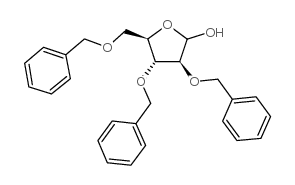
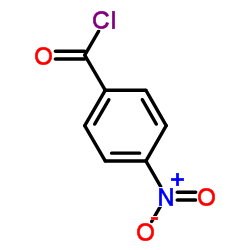
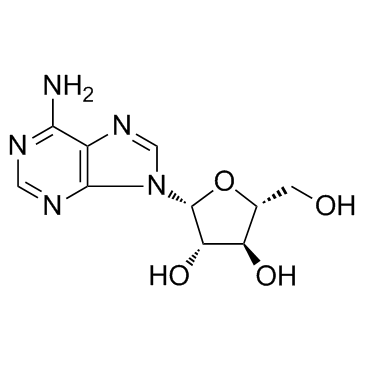 CAS#:5536-17-4
CAS#:5536-17-4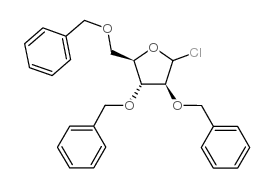 CAS#:4060-34-8
CAS#:4060-34-8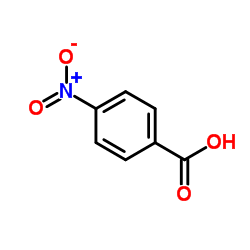 CAS#:62-23-7
CAS#:62-23-7![5-amino-1-[3,4-dihydroxy-5-(hydroxymethyl)oxolan-2-yl]imidazole-4-carboxamide structure](https://image.chemsrc.com/caspic/132/37642-57-2.png) CAS#:37642-57-2
CAS#:37642-57-2
